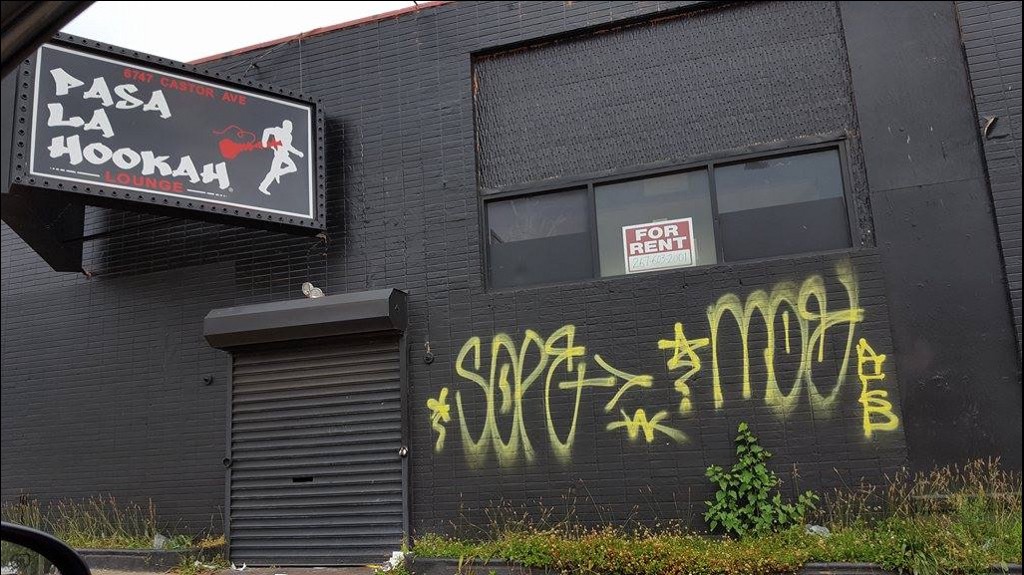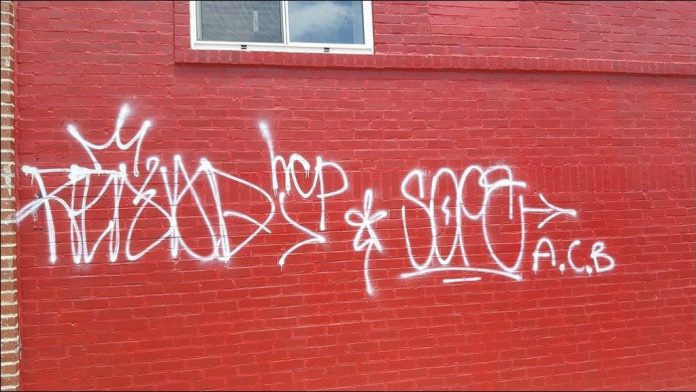An anonymous hero cleans the streets of Northeast Philly.
On his way to work in the morning, a Fox Chase resident pulls his car over next to a utility pole. Once again, the pole has been plastered with illegally placed signs, instructing the reader to call a number to sell their junk car. No additional information is provided. Those who call the number hoping to make a quick buck will be tricked into giving personal information to a scammer.
For what seems like the millionth time (and very well may be), he removes the illegal sign from public property in Fox Chase.
This is just a typical morning pit stop for the Fox Chase resident. In total, he has removed more than $2.6 million worth of illegal signage fees.
Graffiti and Bandit signs in August 2017
He wishes to remain anonymous. (“You never know what kind of people I might deal with.”) He’s been removing signs for well over a decade, ever since he lived in Oxford Circle. He noticed the neighborhood starting to change after he lived there for 15 years.
“It was pristine for 15 years, then graffiti started to appear,” he said.
When he first saw the vandalism, he took it upon himself to remove it, figuring police had more urgent crimes to respond to than petty vandalism. By accident, he discovered that a chemical he had been using to clean his car worked perfectly to remove the paint.
He continued to combat the defamation until he moved to Fox Chase in 2003, which had less vandalism. But in 2006, he started seeing graffiti appear in that area as well.
“I hated what happened to Oxford (Circle), and I wasn’t going to let it happen to Fox Chase,” he said. “I’m not going to live in a blighted neighborhood.”

He subscribes to the broken windows theory, a criminological theory stating that minor quality-of-life crimes such as graffiti and illegal signage signal to the community it is OK for more serious crimes to be committed in the same area. He argues that if you tackle the little quality-of-life crimes, it will have a lasting impact on bigger crimes.
“If you take care of the little things, big things won’t come,” he said.
In addition to graffiti, he tears down illegal signage known as bandit signs. Bandit signs are “un-green” advertisements that are placed on public property without permission. They are mostly made of “coroplast,” or corrugated plastic, which is non-biodegradable. This makes them both bad for the environment and illegal. They are often displayed on utility poles, trees, fences or anywhere the public will easily see them.
The signs are cheap to produce, and thus are easy ways to quickly spread word to the public.
The city of Philadelphia charges an average fine of $75 per bandit sign. In 2003, the city passed a bill that set the upper limit to $300 per sign.
The anonymous bandit sign remover estimates that there are at least 20,000 bandit signs displayed in the city at any given time.
“That’s $6 million the city isn’t collecting in fines,” he said.
Those who display bandit signs are persistent. He said that sometimes a sign he removes on his way home from work will be replaced by his commute back the next morning. He believes they hang the signs in the early hours of the morning to avoid being seen.
Of all the offenders, signs advertising for junk cars are the most persistent, with some posting hundreds of copies of the same sign. Of the 8,744 bandit signs he has removed and accounted for, a sign that reads “JUNK CARS Cash Paid 215–740–6116” has stubbornly accounted for 3,725 of them.
Multiply that by the standard fee of $75, and the person behind that sign owes the city $279,375.
Multiply it by the upper limit fee of $300, and they owe the city $1,117,500.
The vast majority of the bandit signs he takes down advertise buying junk cars or houses. In total, he has removed $2,623,200 of bandit signs when the upper limit fee of $300 is applied.
Once the bandit signs are displayed, the owners rarely remove them. Eventually, they will fall to the ground. Unless someone picks them up and disposes of them (they are recyclable), they will just become litter.
He always keeps his eyes open for more vandalism, and wakes up a few hours early on weekends to clean or remove. It’s a big job, but he hasn’t always worked by himself.
In 2013, a friend joined him (we’ll call him Buddy), and they would drive around the neighborhood once or twice a week hunting for vandalism to tear down. Buddy maintains similar values about keeping the neighborhood clean and crime-free.
“I’m proud to say there are people out there who care about where we live. Many people are out there putting their voices ahead and making sure things are moving in a positive direction,” Buddy said.
Buddy said that the fines they’ve racked up are so large there’s no way they would be able to pay them, even if the city did go after them.
Instead, he believes in an alternate option.
“Let’s invest in them,” Buddy said. “Let’s utilize the people doing the graffiti and create productive jobs for them.”
He cited mural arts programs as a way to make all voices heard and beautify the community.
“I don’t know. Let’s take the negative and turn it into a positive,” Buddy said.
As for the original graffiti and bandit sign remover, he feels strongly about Fox Chase as a neighborhood. He described it as a small town that just happens to be in the big city. He said there is good camaraderie amongst neighbors, and cited Fox Chase Elementary School and civic leaders as particularly positive influences.
So for the persistent bandit sign hangers who hang signs every night, they’ve met their match.
“I’ll be doing this as long as I’m physically able to,” he said. ••
Logan Krum can be reached at [email protected]





